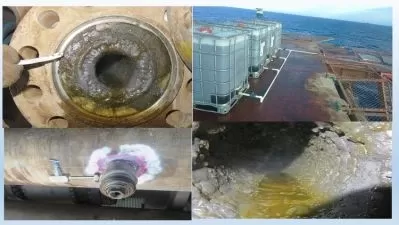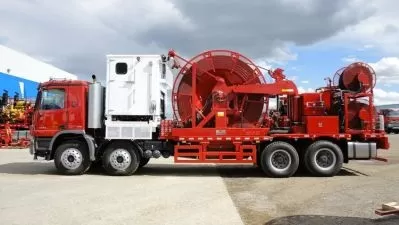Control Valves : Fundamentals, Sizing, and Application
Velocis Solutions
2:14:30
Description
Master Control Valves: Key Components, Sizing, Selection, and Flow Characteristics for Industrial Efficiency
What You'll Learn?
- Understand control valve components, functions, and key characteristics.
- Analyze control loop dynamics, including gain, dead time, and response.
- Select appropriate control valves for specific industrial applications.
- Master control valve sizing techniques for accurate flow regulation.
Who is this for?
What You Need to Know?
More details
DescriptionThis course on Control Valves is designed to equip participants with essential knowledge for understanding and applying control valves in industrial settings. Control valves are crucial for regulating flow, pressure, and temperature in various processes, impacting industries like oil and gas, chemical manufacturing, and power generation. By mastering the selection, operation, and maintenance of control valves, students can significantly enhance process stability, safety, and efficiency.
The course begins with a focus on terminology, laying a foundation by introducing key terms like control condition, set value, actuator, and controlled medium, which are fundamental to understanding automated control systems. Participants then explore different types of control valves, including sliding stem and rotary valves, as well as specific valve types like globe, butterfly, and ball valves. Each type’s characteristics, advantages, and limitations are discussed, providing a well-rounded perspective for various applications.
Key sections of the course include valve sizing and selection. Proper valve sizing ensures that the chosen valve can handle the intended flow capacity and pressure range without issues like choked flow or excessive noise. Additionally, selection criteria such as fluid type, temperature, and pressure ratings are explored to guide participants in choosing the most suitable valve for any application.
Through interactive lessons and practical examples, this course aims to build both theoretical and practical knowledge, enabling participants to apply these concepts effectively in their respective fields and optimize industrial processes through better control valve use.
Who this course is for:
- This course is designed for engineers, technicians, and students interested in learning about control valves and industrial automation. It’s ideal for those involved in process engineering, instrumentation, and automation who want to enhance their understanding of valve types, sizing, and operation. Professionals seeking to improve their skills in process control, maintenance, and valve selection will find this course valuable, as well as beginners looking to build a solid foundation in control systems. Whether you are a recent graduate, a field technician, or a seasoned engineer, this course provides the knowledge needed to excel in managing industrial processes.
This course on Control Valves is designed to equip participants with essential knowledge for understanding and applying control valves in industrial settings. Control valves are crucial for regulating flow, pressure, and temperature in various processes, impacting industries like oil and gas, chemical manufacturing, and power generation. By mastering the selection, operation, and maintenance of control valves, students can significantly enhance process stability, safety, and efficiency.
The course begins with a focus on terminology, laying a foundation by introducing key terms like control condition, set value, actuator, and controlled medium, which are fundamental to understanding automated control systems. Participants then explore different types of control valves, including sliding stem and rotary valves, as well as specific valve types like globe, butterfly, and ball valves. Each type’s characteristics, advantages, and limitations are discussed, providing a well-rounded perspective for various applications.
Key sections of the course include valve sizing and selection. Proper valve sizing ensures that the chosen valve can handle the intended flow capacity and pressure range without issues like choked flow or excessive noise. Additionally, selection criteria such as fluid type, temperature, and pressure ratings are explored to guide participants in choosing the most suitable valve for any application.
Through interactive lessons and practical examples, this course aims to build both theoretical and practical knowledge, enabling participants to apply these concepts effectively in their respective fields and optimize industrial processes through better control valve use.
Who this course is for:
- This course is designed for engineers, technicians, and students interested in learning about control valves and industrial automation. It’s ideal for those involved in process engineering, instrumentation, and automation who want to enhance their understanding of valve types, sizing, and operation. Professionals seeking to improve their skills in process control, maintenance, and valve selection will find this course valuable, as well as beginners looking to build a solid foundation in control systems. Whether you are a recent graduate, a field technician, or a seasoned engineer, this course provides the knowledge needed to excel in managing industrial processes.
User Reviews
Rating
Velocis Solutions
Instructor's Courses
Udemy
View courses Udemy- language english
- Training sessions 64
- duration 2:14:30
- Release Date 2025/02/24










